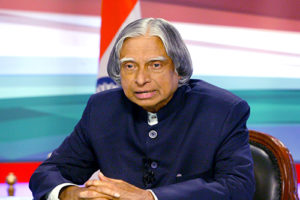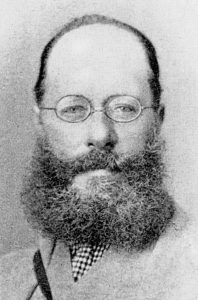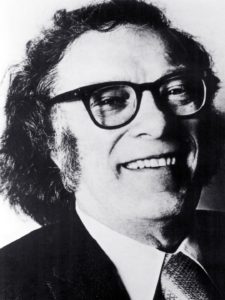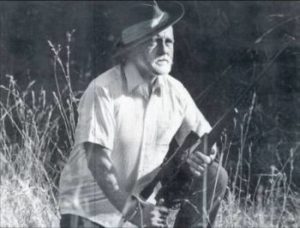We have decided to create the most comprehensive English Summary that will help students with learning and understanding.
Kathmandu Summary in English by Vikram Seth
Kathmandu by Vikram Seth About the Author
Vikram Seth, (bom June 20, 1952, Calcutta, India) is an Indian poet, novelist, and travel writer. He is better known for his verse novel The Golden Gate (1986) and his epic novel A Suitable Boy (1993).
The son of a judge, Leila Seth, and a businessman, Prem Seth, Vikram Seth was raised in London and India.
He attended exclusive Indian schools and then graduated from Corpus Christi College, Oxford. He received a master’s degree in economics from Stanford University in 1978 and later studied at Nanking (China) University. In 1987 he returned to India to live with his family in New Delhi.
Although Seth’s first volume of poetry, Mappings, was published in 1980, he did not attract critical attention until the publication of his humorous travelogue From Heaven Lake: Travels through Sinkiang and Tibet (1983. He also wrote a collection of 10 poems Beastly Tales from Here and There (1992).
| Poet Name | Vikram Seth |
| Born | 20 June 1952 (age 67 years), Kolkata |
| Education | Corpus Christi College, Oxford |
| Notable Awards | Padma Shri, Sahitya Akademi Award, WH Smith Literary Award |
| Nominations | National Book Critics Circle Award for Autobiography |
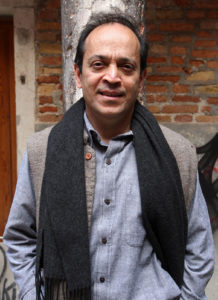
Kathmandu Introduction to the Chapter
Kathmandu is is an extract from a travelogue written by Vikram Seth, From Heaven Lake which narrates his long journey from China to India via Tibet and Nepal. Kathmandu is an account of his time spent in Nepal and the description of the two famous temples of Kathmandu—the Pashupatinath, sacred to the Hindus and the Baudhnath Stupa, sacred to the Buddhists. He not only describes the ambience inside these temples but also records his observations about their surroundings and contrasts the hectic activity in the Hindu temple with the serenity in the Buddhist stupa.
Kathmandu Summary in English
The writer, Vikram Seth, journeyed from China to India via Tibet and Nepal. On reaching Kathmandu he hires a cheap room in a hotel and slept for hours. The next morning, accompanied by one Mr. Shah and his nephew, he visits the two temples of Kathmandu—the Hindu temple of Pashupatinath and the Bodh temple, the Baudhnath stupa.
The author first visits Pashupatinath Temple, where the right to entry is reserved for the Hindus alone. The atmosphere there is of ‘febrile confusion’ and people (priests, hawkers, devotees, tourists) and animals (cows, monkeys, pigeons and dogs) roam through the grounds. People jostle with each other trying to get the priest’s attention. With the entry of the Nepalese princess the crowd makes way. Outside, the westerners continue to argue in vain with the policemen to gain permission for entering the temple, claiming to be Hindus. Priests, devotees, hawkers, dogs, pigeons, tourists—all get together to add to the confusion.
Two monkeys race each other over a shivalinga towards the holy river Bagmati. On the banks of the river a corpse is being cremated, washerwomen are washing clothes and children are bathing in the river. Wilted flowers and old offerings aere thrown into the river, polluting the river. A small shrine half protrudes from the stone platform on the river bank. Legend says when it emerges fully, the goddess inside will escape, and the evil period of the.Kaliyug will end on earth.
In contrast to the noisy activity in the Hindu temple, Seth finds peace, quietness, and serenity at the Baudhnath stupa. Baudhnath Stupa is a quiet, still place, its white dome ringed by a road. There are small shops on the outer edge of the road mostly owned by Tibetan immigrants. Inside the shrine there are no crowds. There is stillness and quiet. It stands out as a safe haven for quietness amidst busy streets.
After visiting the temples, the writer roams about on the streets of Kathmandu and finds it to be a busy city. Seth chooses the adjectives vivid, mercenary and religious to describe Kathmandu. He finds its narrow streets are busy and very noisy. The streets are crowded with fruit sellers, hawkers of postcards etc. The shops sell Western cosmetics, film rolls and chocolate; or copper utensils and Nepalese antiques. The city is noisy with film songs blaring out from the radios, car horns honking, bicycle bells ringing, stray cows lowing and vendors shouting out their wares.
Tired and homesick, the author decides to return home. He buys an airline ticket and returns to his hotel.
Near his hotel he hears the melodious sound of a flute seller. The flute seller plays spontaneously and without a conscious effort and seems to sell his flutes in a carefree manner. The flutes captivate him and he recalls that there is no culture that does not have its flute—the reed neh, the recorder, the Japanese shakuhachi, the deep bansuri of Hindustani classical music, breathy South American flutes and high pitched Chinese flutes.
He is amazed at himself for noticing such details of these musical instruments for he has not done so earlier. The music of the flute leaves a deep imprint on his mind and he carries it with him when he returns home.
Kathmandu Title
Kathmandu, as we know that it is an extract from an account of a journey that the writer Vikram Seth undertook from Heaven Lake in China to India. However, the. extract does not provides either a description of the city, or information about the Nepalese capital; it is a recording of the writer’s impressions about the city. We expect to know more about Kathmandu. Still, with the author’s main focus on the two famous temples and a brief description regarding his general impression about Kathmandu, this title stands justified.
Kathmandu Setting
In this extract, Kathmandu Vikram Seth describes two famous temples of Kathmandu—the Pashupatinath Temple and the Baudhnath Stupa. The atmosphere at the Pashupatinath Temple is one of feverish confusion. He finds people performing different rituals performing on the bank of the holy river Bagmati. He then visits the Baudhnath Stupa, where there is a sense of stillness. Tibetan immigrants selling different things on the side of the road. After this he roams on the streets of Kathmandu. These streets are busy and crowded. He becomes tired and returns to his hotel.
Kathmandu Theme
The theme of Kathmandu, a brief extract from Vikram Seth’s travelogue, From Heaven Lake, is glimpses of Kathmandu, especially the famous Pashupatinath temple, sacred to the Hindus, and the Baudhnath Stupa, a holy place for the Buddhists. His experiences in the two temples form a kind of commentary on the two ways of worship and the two cultures. The general environment of Kathmandu forms the sub-theme gf this piece. The author briefly discusses the markets, roads etc. of Kathmandu and also adds a few aesthetic remarks about the musical instrument, flute after listening to a flute seller playing the musical instrument.
Kathmandu Message
The extract Kathmandu is a part of a travelogue and is an account of Vikram Seth’s impressions of Nepal’s capital city, Kathmandu. As such, it does not cany any message. Still, it has deeper layers of meaning. The author disapproves of the noise and confusion in the Hindu temple and admires the serenity of the Buddhist temple. He also reveals how we thoughtlessly pollute our rivers washing clothes on its banks, cremating corpses, and dumping rubbish in them. The extract conveys the message that the purity and serenity of the holy places must be maintained.
Kathmandu Summary Questions and Answers
Question 1.
Where did the writer stay in Kathmandu? Which two different places of worship did he visit? With whom?
Answer:
The writer, Vikram Seth, stayed in a cheap room in the centre of Kathmandu. He visited the Pushupatinath temple, sacred to the Hindus, and the Baudhnath stupa, the holy shrine of the Buddhists with his acquaintances Mr Shah’s son and nephew. .
Question 2.
What is written on the signboard outside the Pashupatinath temple? What does it signify?
Answer:
Outside the Pashupatinath temple, the signboard announces: “Entrance for the Hindus only”. It signifies that the temple is rigid in the maintaining of its sanctity and holiness as a place of worship. This rule is practiced with inflexible strictness to prevent the temple from being treated like a tourist destination.
Question 3.
What does the author mean when he says “At Pashupatinath there is an atmosphere of febrile confusion”?
Answer:
The author makes this remark to imply there is hectic and chaotic activity around the temple. There is a huge crowd of priests, hawkers, tourists, and even animals like cows, monkeys and pigeons roaming through the grounds. Inside the temple, there are a large number of worshippers who jostle and elbow others aside to move closer to the priest. Together, they create utter confusion.
Question 4.
Why do devotees elbow others inside the temple?
Answer:
There is a large crowd of worshippers inside the temple, where everyone is trying to vie for the attention of the priests. As some people try to get the priest’s attention, they are elbowed aside by others pushing their way to the front.
Question 5.
How did the arrival of the princess change the situation?
Answer:
At Pashupatinath temple, worshippers were trying to get the priest’s attention and were elbowing and jostling each other as they pushed their way to the front. The situation changed as a princess of the Nepalese royal house appeared; everyone bowed and made way for her.
Question 6.
What did the saffron-clad Westerners want?
Answer:
The saffron-clad Westerners wanted to go inside the Pashupatinath temple. However, as entry to the temple is restricted to Hindus only, they claimed to be Hindus. But the policeman was not allowing them to enter.
Question 7.
Why did the policeman stop the Westerners wearing saffron-coloured clothes from entering the Pashupatinath temple?
Answer:
The policeman stopped the saffron-clad Westerners from entering the Pashupatinath temple as the entry of non- Hindus is banned in this temple and he didn’t believe that they were Hindus, despite their saffron clothes.
Question 8.
Describe the fight that breaks out between the two monkeys around the temple of Pashupatinath?
Answer:
The author describes the fight that breaks out between two monkeys in which one chases the other. The monkey being chased jumps onto a shivalinga, then runs screaming around the temples and finally goes down to the holy river, Bagmati.
Question 9.
What activities are observed by the writer on the banks of the Bagmati river?
Answer:
The writer observes some polluting activities on the banks of the river Bagmati. He notices some washerwomen washing clothes, some children taking a bath and a dead body being cremated on the banks of this sacred river. He also observes someone throwing a basketful of wilted flowers and leaves into the river.
Question 10.
Write a short note on the shrine on the stone platform on the river bank?
Answer:
There is a small shrine on the banks of the holy Bagmati that flows below the Pashupatinath temple. Half part of this shrine protrudes from a stone platform. It is believed that when the shrine will emerge completely from the platform, the goddess in the shrine will escape and that will mark the end of the Kaliyug, or the evil period.
